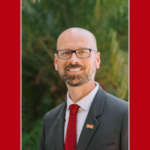 San Diego State University’s Writers’ Conference is one of the oldest and most prestigious conferences in the U.S. and continues to draw talented and determined writers as well as the top industry professionals from all over the nation. While SDSU opened its doors in 1897, its Writers’ Conference launched nearly a 100 years later and in the 30 years since, has adapted to the ever-changing needs of writers by bringing influential dealmakers and cutting-edge topics to the west coast for one information-packed event.
San Diego State University’s Writers’ Conference is one of the oldest and most prestigious conferences in the U.S. and continues to draw talented and determined writers as well as the top industry professionals from all over the nation. While SDSU opened its doors in 1897, its Writers’ Conference launched nearly a 100 years later and in the 30 years since, has adapted to the ever-changing needs of writers by bringing influential dealmakers and cutting-edge topics to the west coast for one information-packed event.
In 1993, dynamic visionaries, Irving Cooper and Diane Dunaway Kramer, met to discuss the proposed conference at SDSU and an idea emerged: Cooper, a screenwriting instructor at the time, would invite Hollywood film and screen writer pals to San Diego to lecture. The SDSU Writers’ Conference was born. The first “mini” conference was a one-day event held at SDSU’s Business Administration Building with about 25 attendees.
The event flourished under the leadership of Jan Wahl, SDSU’s College of Extended Studies retired associate dean, and Diane Dunaway Kramer. Dunaway Kramer expanded the reach of the conferencing by inviting agents and editors from Los Angeles and New York. Through her efforts, the event drew sell-out audiences and outgrew its original location, moving to the SDSU Aztec Center, where keynote speakers and writer luncheons were introduced. Two of the first keynote speakers were Jonathan Kellerman and his wife Faye Kellerman, authors of numerous bestselling suspense novels.
A few years later, SDSU’s coordinator extraordinaire Erin Quinn began scheduling the one-on-one sessions between writers, editors, and agents. The opportunity for writers to have personal access to editors and agents was revolutionary and is copied by many other national writers’ conferences today. It is one of the most popular and talked about aspects of the conference and has resulted in multiple book deals for conference attendees. (Side note: Our once coordinator Erin Quinn joined the staff as an unpublished author and, today has 12 published novels and novellas and two more contracted by a major publisher –Quinn sold her first book after a one-on-one meeting at the conference– talk about a conference success.)
In 2003, after experimenting with several, off-campus venues, the conference moved to a deluxe hotel. One location—serving as event and hotel host—made it convenient for out-of-towners and allowed attendees the opportunity to network outside of the conference room walls. The move drew international attendees and kept the conference at a sellout status, despite an economic downturn.
Under the stewardship of Diane Dunaway Kramer creative co-director, the conference continued to break ground, bringing in speakers such as Loretta Barrett, president of Loretta Barrett Books and former VP of Doubleday Books and Stacy Creamer, VP and Publisher at Simon & Schuster. In November, 2012, Dunaway Kramer retired from the conference and the new creative co-director Erin Quinn took the helm. As a key member of the conference for the past 25 years, Quinn understands the inner workings of this important event. She is a nationally recognized speaker, a published author and an advocate for writers everywhere. Quinn brings creativity, enthusiasm, and experience to the table and hopes to deliver an amazing 2014 conference.
SDSU administrative co-director, Becky Ryan (2005-2012), will be passing the torch to Wendy Evers. Ryan adds, “While I am very sad to be leaving the SDSU Writers’ Conference, I couldn’t be leaving it in better hands; it’s the only thing that is easy about this transition.” Ryan championed the conference into the digital age by encouraging the inclusion of new genres like chick lit and hen lit, as well as bringing social media on board. She noticed a positive trend in the last few years as the new, young adult generation of writers begins to attend with fresh new ideas. This year the 2014 SDSU Writers’ Conference is proud to celebrate its 30th anniversary and co-directors Quinn and Evers look forward to maintaining the popular consultations and advance reading appointments, workshops presented by top editors, agents and authors, and networking opportunities with publishing professionals.
Today, the conference continues to be a success with attendees coming from as far away as Japan, South America, and Switzerland. What started out as a lecture-based conference with a few attendees and faculty participants has grown to over 60 publishing professionals, agents, and editors from New York and Los Angeles with more than 300 attendees. This once small regional event has become one of the most respected writers’ conferences in the country, but it continues to provide individualized attention to each participant.




